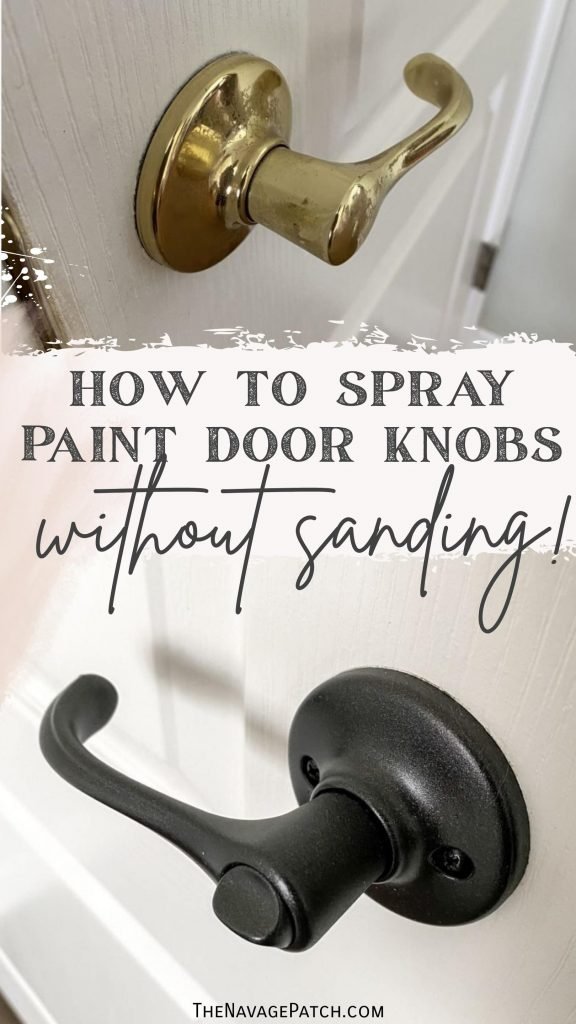
Imagine you’re getting ready to tackle this task, coffee in hand, and you know you want to do it right without a major renovation project involved. The good news is that you can quickly and efficiently lubricate your door knobs, giving them a new lease on life. Let’s dive into the best ways to get this done without disassembling anything.
Why Lubrication Matters for Door Knobs
Lubricating your door knobs isn’t just about easing that annoying squeak. When you lubricate them, you’re improving their functionality and extending their lifespan. Think of it like giving your favorite coffee mug a good wash; it might still work fine, but a little care goes a long way in keeping it fresh.
When door knobs don’t operate smoothly, it can lead to wear and tear over time. While it might seem minor, that resistance can contribute to more significant issues down the road. By taking a few minutes to lubricate them, you help ensure they operate effortlessly, making your daily routines just a little smoother.
Another crucial point is that door knobs are often the first line of defense in your home. Ensuring they work well not only enhances convenience but also contributes to your home’s overall security. A stuck door knob might just be a nuisance, but it can also hinder your ability to exit quickly in an emergency.
Choosing the Right Lubricant
Not all lubricants are created equal. It’s vital to pick the right type for your door knobs to avoid further issues. You might be wondering, “What should I use?” Here’s a quick rundown:
- Graphite Powder: Great for locks and knobs, it won’t attract dust or dirt.
- Silicone Spray: This is perfect for smooth, long-lasting lubrication.
- WD-40: While it can help, be cautious. It’s more for metal surfaces.
Using the right product means you’ll get effective results without the mess or potential damage to your knobs. For example, while WD-40 is handy, it can dry out and create a sticky residue over time, leading to future issues. On the other hand, silicone spray provides a protective layer and won’t attract dirt.
Before you dive into any method, read the label to ensure it’s safe for the specific material of your door knob. It can save you a headache later on.
Methods to Apply Lubricant Without Disassembly
Now, onto the fun part—how to bring your door knobs back to life without taking them apart! Here’s how to do it step by step:
1. Using Graphite Powder
Applying graphite powder is one of the easiest methods. Here’s what to do:
– Step 1: Grab a small container of graphite powder from a hardware store.
– Step 2: Insert the tip of the container into the keyhole of the knob.
– Step 3: Give it a gentle squeeze to release a little powder inside.
– Step 4: Turn the knob back and forth a few times to distribute the powder.
You’ll notice that the knob starts to feel smoother almost immediately. It’s like giving it a refreshing drink!
2. Silicone Spray Method
Silicone spray is incredibly effective and easy to use:
– Step 1: Shake the canister of silicone spray before use.
– Step 2: Apply a light mist around the base of the knob.
– Step 3: With a clean cloth, wipe off any excess spray to prevent drips.
– Step 4: Turn the knob several times to work the spray into the mechanism.
This method not only lubricates but also helps repel moisture, making it an excellent choice for humid areas.
3. Using WD-40
If you have WD-40 on hand, it can work as a temporary fix:
– Step 1: Spray a small amount directly onto the knob’s moving parts.
– Step 2: Use a cloth to wipe up any excess and keep it from dripping down.
– Step 3: Twist and turn the knob to help the lubricant seep into the inner workings.
Remember, while this method is effective, it should be used with caution, as it might require regular touch-ups.
When to Seek Professional Help
Sometimes, despite your best efforts, a door knob just won’t cooperate. Here are signs that you might need to call in a pro:
– Persistent Stiffness: If the knob remains hard to turn despite lubrication, the internal mechanism might be damaged.
– Loose or Wobbly Knobs: This may indicate a more significant issue that needs replacing.
– Difficulty with Locks: If the key gets stuck or won’t turn, it might be time for a locksmith.
Don’t hesitate to reach out for help when the DIY routes aren’t cutting it. A professional can assess and address issues you might not be able to see.
Maintaining Your Door Knobs
Once you’ve lubricated your door knobs, it’s essential to maintain them. Regularly check for signs of wear or stiffness. A quick spritz of silicone spray or a dab of graphite every few months can keep them in perfect shape.
Also, consider cleaning the knobs periodically. Use a damp cloth to wipe away dust and grime. This not only helps maintain their look but also prevents buildup that can lead to stiffness over time.
To sum it up, keeping your door knobs well-lubricated isn’t just about noise reduction. It’s about improving their lifespan and functionality. Regular maintenance can save you from more significant headaches down the road.
Final Thoughts
Lubricating your door knobs without disassembly is a straightforward task that can yield impressive results. Armed with the right tools and knowledge, you can tackle those squeaky knobs like a pro. Whether you choose graphite powder, silicone spray, or even WD-40, the goal is to keep your home running smoothly.
So, take a moment to give your door knobs some attention. You’ll be glad you did when you can open and close them quietly and effortlessly. Happy home maintenance!
